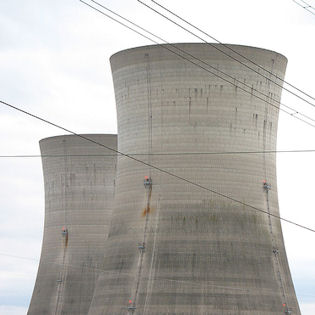Melting Down an Autism Stereotype

By now, I expect we’ve all seen plenty of articles, books, and other media depicting the “autistic meltdown,” wherein a slight change in routine supposedly triggers some kind of massive brain short-circuit and an instant eruption of violent rage. This image, which a few years ago was found mainly among the haters at FAAAS and other similar bigots, is now being plastered all over the public consciousness by mainstream authors such as Jodi Picoult in her recently released novel House Rules.
The inevitable result is widespread discrimination, of course, when hiring managers and other decision-makers start looking upon autistics as walking nuclear disasters who might explode at any moment. If any other minority group had to contend with a hugely damaging stereotype like this, you can be sure they’d be screaming bloody murder about it. But the autistic community has done very little to oppose it; rather, many of us are continuing to use the word in routine conversation, perhaps trying to redefine it a bit around the edges, but taking for granted that it really does refer to something unique to autistics.
However, there’s no scientific evidence to support that belief, no matter how the word might be defined. Nowhere in the diagnostic criteria does anything about “meltdowns” appear. Brain imaging studies have not identified structural differences that would account for them. As far as I know, there haven’t even been any research studies—with appropriate controls for the subjects’ baseline level of stress and other relevant factors—establishing whether the frequency of “meltdowns” is any different among autistics than among the general population. (If you know of any such studies, please post a link in my comments.) In short, we’re talking about a stereotype that is based on nothing more than anecdotal stories.
Of course, I’m not arguing that autistic people don’t have unpleasant reactions to stress and overload. Certainly we do. We’re only human, after all. But what I’m disputing is the idea that “meltdowns” are something intrinsic to autism, rather than a consequence of what chaoticidealism accurately describes as an “underlying, dangerously-high stress level.” What I think happens, in many cases, is that the stress of living in an autistic-unfriendly environment builds up over time; and then the blame for the resulting “meltdowns” ends up being wrongly attributed to some sort of mysterious autistic brain cooties, rather than being placed where it belongs—on the detrimental situation that created the stress.
So let’s start recognizing and acting in our own best interest, people. If we want equal opportunity in the schools and workplaces, we’re not going to get there by meekly letting ourselves be described in terms that cause school administrators and employers to see every autistic person as a threat to public safety. And if we want accommodations to make our environment more comfortable and reduce our stress levels so that we can be more productive at school and work, we’re not going to get those, either, if every time we react badly to a stressful situation it’s just presumed to be the way autistic people naturally behave regardless of the circumstances.
Crossposted from Whose Planet Is It Anyway?
Guest on 03/18/10 in featured, Society | 2 Comments | Read More
Comments (2)


aaah Cooling Towers, what can I say, we have so many.
There were 13 at Hams Hall, now not a one remains, and just over the back from me was Longford Power Station, but never mind the Pylons remain and how magnificent they still are.
http://www.larry-arnold.net/photography/pylons/more.htm
And if you interupt me when I am in reverie over these giants of the landscape, then you will see what a meltdown is
Gonna see my favourite again outside Berkhamstead tommorow.
Thanks Larry. I particularly like the green-tinged one; it has quite an eerie feel to it.